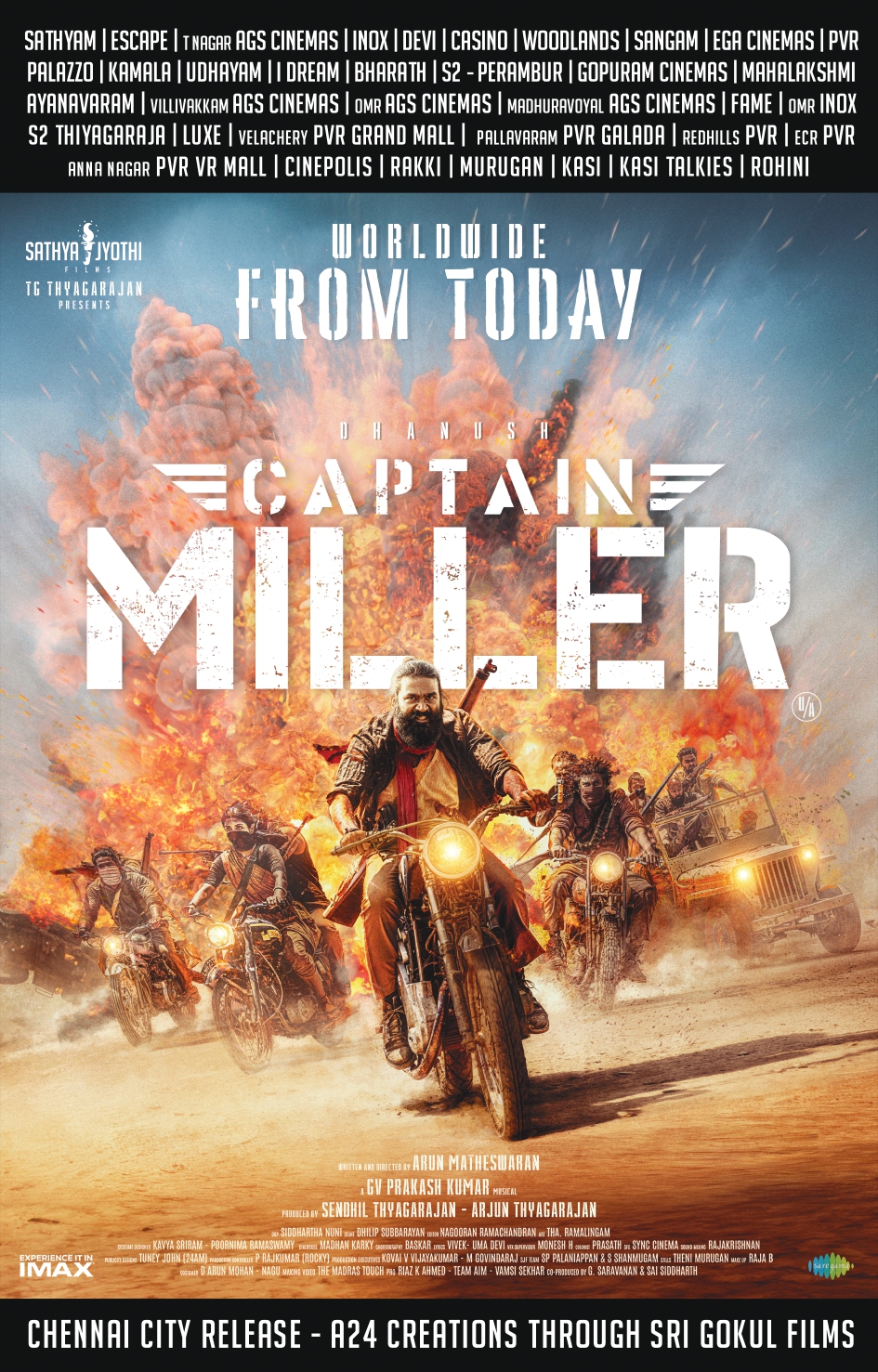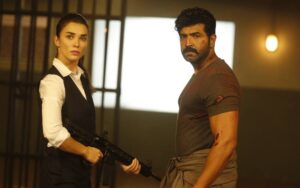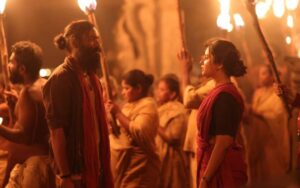Review: Gunjan Saxena, The Kargil Girl
Director Sharan Sharma’s Gunjan Saxena is exactly what an informed film critic or film buff would expect it to be — an attempt to glorify women by putting down men and respectable institutions.

Film: Gunjan Saxena, The Kargil Girl
Director: Sharan Sharma
Cast: Janhvi Kapoor, Pankaj Tripathi, Angad Bedi and others.
Rating: One star
Director Sharan Sharma’s Gunjan Saxena is exactly what an informed film critic or film buff would expect it to be — an attempt to glorify women by putting down men and respectable institutions.
The story, we are told, is “inspired by a true story” — the story of “India’s first woman pilot to fly in Kargil, Gunjan Saxena’ (by the way, even this claim is being disputed).
Like every other badly made film, Gunjan Saxena too has its share of exaggerations, artificiality and inconsistencies.
However, what makes this film unique is that its contradictions don’t start from scene one. They start even before the film begins. Yes, that’s right! They start from the disclaimers itself!
While one disclaimer claims that the story is inspired by events based on the life of Flt Lt Gunjan Saxena, it is soon followed by another one, which is in a much smaller font and more difficult to read, which says, “As this film is a fictionalised and dramatised version of the life events of Flight Lieutenant Gunjan Saxena set during the time period of the late 20th century, no scenes should be construed to represent a true or accurate recreation of the actual events that transpired…”
In other words, what this means is that nothing in this film is actually true. It is an exaggerated, manipulated account of whatever transpired, if it all it transpired in the first place!
The filmmakers obviously thought that they could get away with showing whatever feminist balderdash they wanted to by claiming exemption using the phrases “creative liberties” and “dramatizing events for cinematic expressions.”
Moving on, the film starts with Gunjan Saxena (Janhvi Kapoor) being ordered to carry out a rescue mission in Kargil. And in due course, we are told about how she had a fascination for flying from the time she was a girl.
It is from here that the ordeal begins…
First the outrageous exaggerations!
Case in point 1:
Gunjan Saxena clears the written test for the IAF’s women pilot scheme. After this, she clears a number of rounds including her physical tests and finally gets shortlisted for the interview.
Now, in the interview, Gunjan is asked to talk about two major topics pertaining to Indian current affairs.
Gunjan Saxena, who doesn’t have so much as a clue about anything substantial, talks about the hit song from the Hindi film Raja Babu. She follows it up with facts on Tuffy, the dog that Salman Khan’s character owns in the film Hum Aapke Hain Kaun!
And voila! The Indian Air Force picks her pronto!
I don’t know if this is true or if the filmmakers have used their “creative liberties” here as well. But if this is true, then the IAF seriously needs to revisit its recruitment policies!
Case in point 2:
Gunjan Saxena fails her medical tests. We are told she has both a temporary and permanent disablity. The temporary one being she is 7 kgs overweight and the permanent one being her height being 1 cm less than the minimum prescribed height for selection.
In two weeks, she appeals and voila, she gets selected!
Even her lack of One cm height is disregarded as we are told that the reach of her arms and legs are 1.5 cms above the requisite level!
Again, if this is true, then the IAF is in trouble for having granted exemption to just one candidate while there could have been so many other women candidates who could have met all other conditions and performed much better than Gunjan Saxena but who could have lost out on the opportunity of making it to the Indian Air Force just because of the same height rule.
We could go on and on about the exaggerations. The film is full of them. But then, there are other issues that need to be talked about as well. And for that sake, I choose to stop.
Moving on, casting seems to be another problem. Jahnvi Kapoor, who plays Gunjan Saxena, looks frail and at sea in the film. Half the time, she doesn’t look the part, especially in the portions where she appears in a uniform. Her lack of expressions don’t help her cause and on most occasions, her expressions come across as being bland or artificial.
It is not just casting. Characterisation is also a problem.
Take for instance the character of Pankaj Tripathi, who plays a feminist dad. His sole purpose in the film is to take the side of his daughter and humiliate anyone (his son in particular) who disagrees with her. He is so annoying that at times, the film becomes almost unbearable.
Other than Tripathi’s character, almost every other male character in the film is demonised, in the hope of making the challenges faced by the ‘naive’, innocent-looking, ‘brilliant’ Gunjan appear that much more difficult. We are made to believe that the sole existence of all male characters in the film or for that matter in the world, save her dad, is to stop her from realising her dream of flying!
This, the filmmakers, sincerely hope, will raise the stature of her character. Sadly, it doesn’t.
From her brother to the clerk from whom Saxena has to collect the key to her quarters, to her commanding officer to all the men at the Udhampur Air Force Base, every single male character is made to look like a monster.
In the disclaimer, the filmmakers claim that they do not “intend to malign, defame, slander or hurt or be disrespectful to any persons, place, religion, country, region, community or individuals or religious sentiments, belief or feelings of any person(s).
However, what the film and its makers end up doing is exactly that.
The film maligns the reputation of the Indian Air Force, showcasing it as a hostile entity to women. In particular, it spares no effort in demonising the whole of the Udhampur Air Force Base, showing all the men serving there as being male chauvinists.
For instance, there is a scene in the film wherein Gunjan Saxena, being the only female officer, is not accorded a dressing room. As a result, she has to run out of the building to change and return to the tarmac. As she is late, the instructors, we are told, leave without her on a sortie. One can go on and on about the number of such instances that the film showcases. If there is truth in this, then the IAF must be condemned. But if there’s isn’t any truth in what has been shown, these are very serious allegations against the ace defence unit for it to let go unchallenged.
The film literally mauls the reputation of the Indian Air Force in general and the reputation of its male air force pilots, in particular, showing all of them to be biased, unfair, inconsiderate and egoistic.
No wonder then that the IAF has written a strongly worded letter to the CBFC citing the miserable manner in which the film has misrepresented it.
To the regular viewer, this film is likely to come across as feminist rhetoric. Another classic case of a simple mission being given undue importance and being glorified to the skies, just because the pilot was a woman.
If you are not a feminist, then it is highly unlikely that you will enjoy this fare. Skip it and save yourself the trouble of having to sit through a slow, dragging, boastful film that can at best be described boring.





